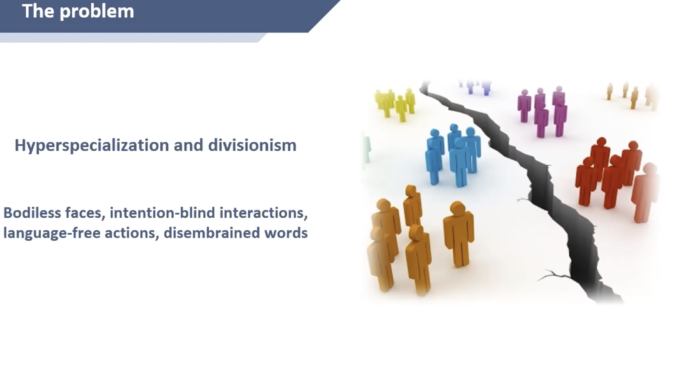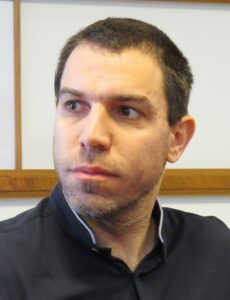
By Adolfo M. García

Cognitive Neuroscience Center, Universidad de San Andrés, Argentina
National Scientific and Technical Research Council (CONICET), Argentina
Global Brain Health Institute, University of California, San Francisco, USA
Departamento de Lingüística y Literatura, Facultad de Humanidades, USACH, Chile
Abstract
We, human beings, are geared towards sensemaking. Enormous knowledge has been accumulated about this semiotic faculty, with different disciplines emphasizing analytical, cognitive, social, cerebral or otherwise biological aspects. Often, such emphasis has been exclusionary, resulting in characterizations of context-blind interactions, language-free actions, and disembrained words. Though indispensable and variously informative, this compartmentalistic approach fails to track the convergences of the neurological, sensorimotor, genetic, and social processes which jointly shape sensemaking day after day. A promising alternative is offered by the field of neurosemiotics, whose pluralistic ethos can capture reciprocal interplays across these dimensions, effacing disciplinary boundaries. In this presentation, I will claim that human sensemaking hinges on the concerted dynamics of myriad sociobiological dimensions, mainly by reference to the domain of action language (verbal units denoting physical motion). Based on diverse experiments, I aim to show that this semiotic domain is rooted in the synergies of hemodynamic, electrophysiological, magnetoencephalographic, neuromodulatory, genetic, behavioral, and experiential dimensions. Specific descriptions and explanations, as well as educational and clinical implications, will be derived therefrom, showing that a neurosemiotic perspective can prompt non-trivial basic and translational breakthroughs. Briefly, a case will be made for holistic approaches to capture sensemaking as the multidimensional semiotic phenomenon it essentially is.
PANEL:
Michael W. Mair (Timaru)
Annabelle Lukin (Sydney)
Roman Esqueda (Mexico)
Remo Gramigna (Torino)
Rukmini Bhaya Nair (New Delhi)
Giovanni Buccino (Milano)
Others to be announced
MODERATOR:
Andrew Wardell (Lausanne)
COMMENTS
By Dr. Michael Mair

Be the first to comment